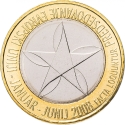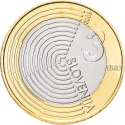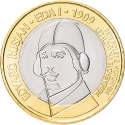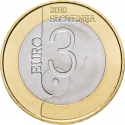You are about to finish your registration. Please check your mailbox (including spam folder). There should be a letter with a confirmation link. Check setting to make sure that your e-mail address is correct.
Send letter againDescription
Slovenia has historically been the crossroads of Slavic, Germanic, and Romance languages and cultures. The territory of modern-day Slovenia has been part of many different states; the Roman Empire, the Byzantine Empire, the Carolingian Empire, the Holy Roman Empire, the Kingdom of Hungary, the Republic of Venice, the Illyrian Provinces of Napoleon's First French Empire, the Austrian Empire and Austria-Hungary Empire. In October 1918, the Slovenes co-founded the State of Slovenes, Croats and Serbs. In December 1918, they merged with the Kingdom of Serbia into the Kingdom of Yugoslavia. During World War II, Germany, Italy, and Hungary occupied and annexed Slovenia, with a tiny area transferred to Croatia, a Nazi puppet state at that time. In 1945, It became a founding member of Yugoslavia. Post-war, Yugoslavia was initially allied with the Eastern Bloc, but after the Tito-Stalin split of 1948, it never subscribed to the Warsaw Pact, and in 1961, it became one of the founders of the Non-Aligned Movement. In June 1991, Slovenia became the first republic that split from Yugoslavia and became an independent sovereign state.
The initial revolutionary events in Slovenia pre-dated the Revolutions of 1989 in Eastern Europe by almost a year, but went largely unnoticed by international observers. On 23 December 1990, more than 88% of the electorate voted for a sovereign and independent Slovenia. On 25 June 1991, Slovenia became independent through the passage of appropriate legal documents. On 27 June in the early morning, the Yugoslav People's Army dispatched its forces to prevent further measures for the establishment of a new country, which led to the Ten-Day War. On 7 July, the Brijuni Agreement was signed, implementing a truce and a three-month halt of the enforcement of Slovenia's independence. At the end of the month, the last soldiers of the Yugoslav Army left Slovenia.
In December 1991, a new constitution was adopted. The members of the European Union recognised Slovenia as an independent state on 15 January 1992, and the United Nations accepted it as a member on 22 May 1992.
Engraver: Gregor Ivanušič
Obverse

|
Depicts value, country name and date below. 3 |
|---|---|
Reverse

|
Depicts the silhouette of Mt. Triglav, serving as the central symbol of the Slovenian state. 30 |
| Edge |
Characteristics
| Type | Commemorative Issue (Non-circulating) |
| Material | Bi-Metallic |
| Ring | Copper Nickel Zinc |
| Center | Cupronickel |
| Weight | 15 g |
| Diameter | 32 mm |
| Thickness | 2.39 mm |
| Shape |
|
| Alignment | Medal |
| Mint |
Italian State Mint and Polygraphic Institute (IPZS)
|
Related coins
100th Anniversary of the First Flight by a Powered Aircraft over Slovenia







